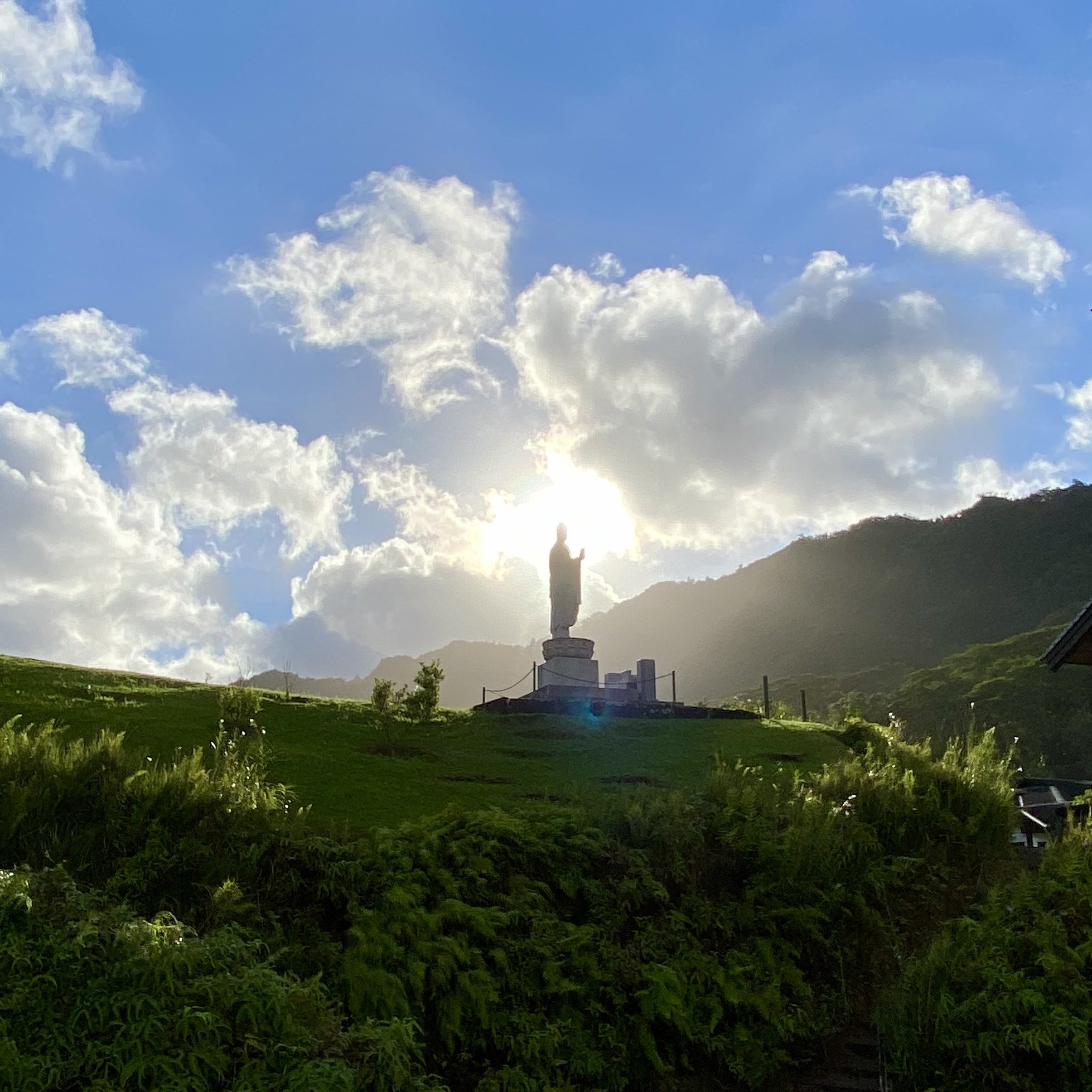Letter from the Abbot: Back To Basics, by Sayama Daian Roshi
Our 50th anniversary is a fitting moment to reaffirm the basics of shugyo at Chozen-ji. The idea of Chozen-ji started in 1970 when Tanouye Rotaishi asked Omori Rotaishi for five years of his life to bring shugyo to the West. In 1972, they established Chozen-ji and later Tanouye Rotaishi wrote an “An Outline of Chozen-ji Zen Training” in which he laid out the fundamentals of our approach. This outline was included in the Policies and Operational Structure of Daihonzan Chozen-ji, a formal document adopted in 1991 which is as close to a constitution that we have. The outline begins with two foundational statements:
“Kiai” is of the utmost importance.
Sesshin, Zazen, and Hojo are the core of shugyo (spiritual training).
Kiai can be understood as energy or vitality, psychophysical in nature, but it can also refer to the universal flow of energy called Kozen no Ki in Japanese. Kiai might also be considered the subtlest manifestation of the Tao we can experience. “What is kiai?” is as much a koan as “What is Mu?” Tanouye Rotaishi said, “What is transmitted in the Chozen-ji School is the kiai. Without kiai, everything is a monkey show. Mind Only is Just Energy. To seek your True Self is to help others seek their own Self Nature.”
As our basic practice, zazen is familiar to many students so let me simply offer another way of looking at it. In zazen, one literally refines breath, posture, and concentration into kiai, increasing it and clarifying it.
The Hojo is a sword form created about 500 years ago. It has four parts expressing the kiai of the four seasons. It is done by two partners. One is Shin (Mind), and the other is Kage (Shadow). They reflect each other in precise movements coordinated with breathing. The Hojo takes about 10 minutes to perform, and after learning the form one can experience action without intention, samadhi in movement. The objective of the Hojo is “to cut off all the habits you have acquired since the day you were born and to return to your original nature.” How you breathe and how you walk are two basic habits the Hojo seeks to transform. Tanouye Rotaishi distinguished the Hojo from all the other martial and fine arts. All students were to train in it and also select a martial or fine art in addition. Since it’s unlikely that all students will learn the actual Hojo, teachers at Chozen-ji must find a way to incorporate its way of breathing and walking into their various disciplines.
All serious students must do sesshin. Sesshin literally means "to collect the mind"and is a six day period of meditation and concentration. This extended period is necessary to collect the mind because ordinarily, our minds are so scattered going from one chore or concern to another. From the beginning to the end, whether eating, doing manual labor, or martial arts, one should approach sesshin as if it is actually one long sitting in zazen.
The objective of sesshin is to “transcend limits that you impose upon yourself.” While this sounds grand, by definition, sesshin makes you want to quit, feeling like you cannot go on. Today we accommodate the real physical limits of a person so even students in their 70’s like Gary Omori Roshi have done it. If you are committed, you can do it. Although sesshin should always be trying, as your training matures, it actually becomes pleasurable. At 79, Honda Roshi is having the time of his life, making soba noodles, hitting the taiko, and playing the shakuhachi, even though getting up and down from the floor is a project. Because of the importance of sesshin, we are committed to holding it twice a year and did so despite the pandemic and the recent huge storm. We followed all distancing, masking, quarantine, and vaccination regulations and had no Covid cases.
Returning to the basics of shugyo along with the building of the new residences at 3570 Kalihi Street will set us up well for the next 50 years. Our mission during that time should be to provide a place for future generations of leaders to do what Tanouye Rotaishi called “deep immersion.” Tanouye Rotaishi believed in “the presence of deep, spiritual beings, for the depth necessary for counseling and guidance in crucial and dangerous times, for ways that people might find their way back to humanity.” He said:
"For centuries, for millennia, the spiritual paths of the world have depended on deep immersion. Communities and cultures would support people stepping away from their occupations and their lives and immerse themselves in deep training. It would be three years just to enter, and at least ten years to mature into the faith, into the Way….Societies would support this….
"It is impossible in modern times for anyone to stop their jobs and their lives for a few months, let alone a few years. In the meantime, we seem to be hurtling to our own demise, our own destruction in ways that are all about our separation from our own humanity. Fewer people with less depth to deal with more crises and chaos. Will this generation be able to turn the tide?”
Given the widespread dysfunction we see today in the face of unprecedented, existential threats, such deep immersion is more important now than ever. We must develop a new model of deep immersion where people can train for extended periods and still work and be with family in this connected world. Cristina Moon calls this the model for the "Millennial monk."
I am deeply grateful to all of you who donated to make the building of the 3570 residences and the exploration of this new model possible. We will be breaking ground for construction in 2022. We hope that this new Way of deep immersion will lead to a new generation of leaders who can turn the tide.
Happy New Year,
Sayama Daian Roshi
Abbot, Daihonzan Chozen-ji


